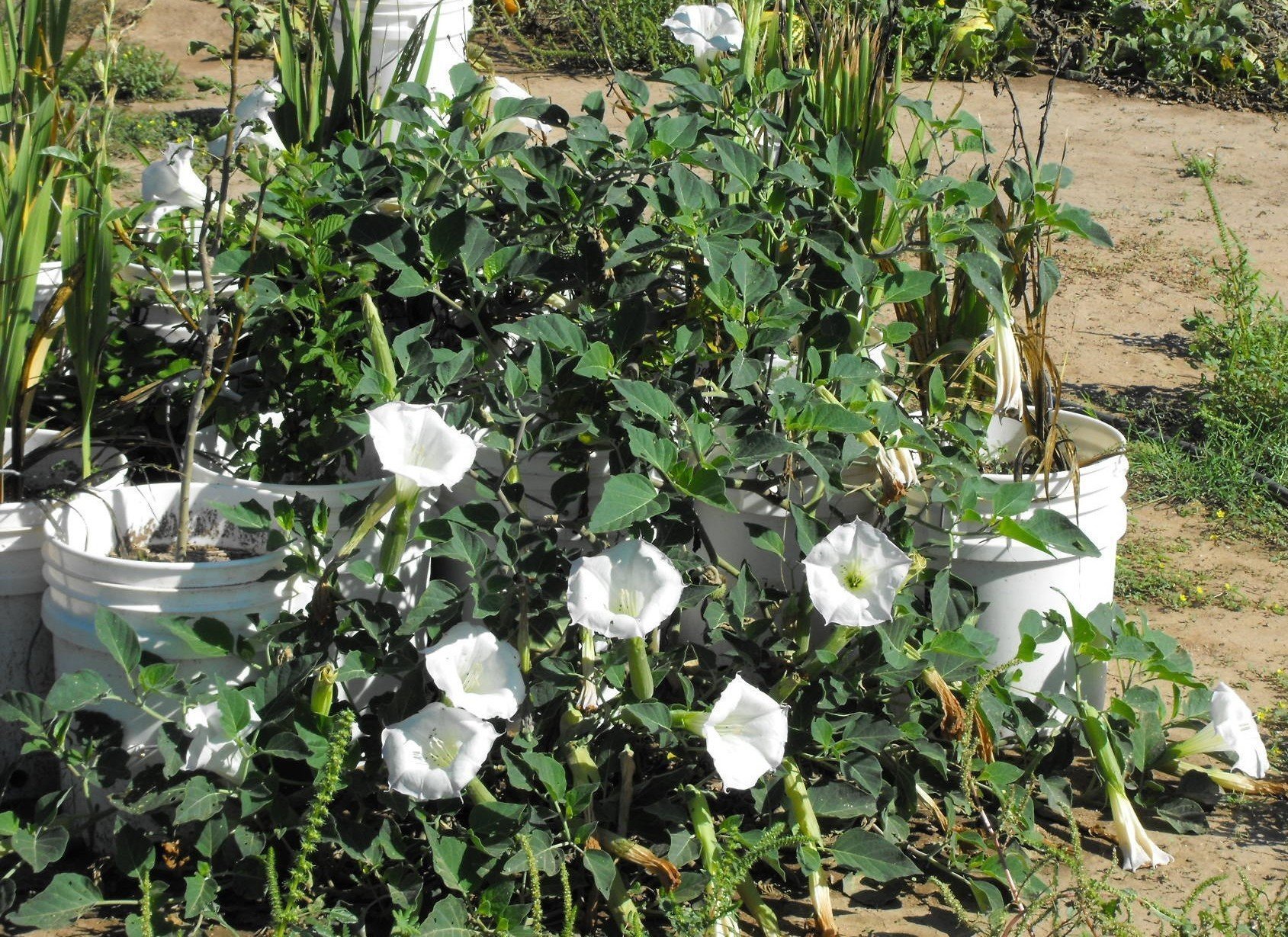INGREDIENTS
This is what you need:
- datura seeds
1999 to date
Datura is a genus of nine species of poisonous Vespertine flowering plants belonging to the family Solanaceae. They are commonly known as daturas, but also known as devil's trumpets (not to be confused with angel's trumpets, its closely related genus Brugmansia). Other English common names include moonflower, jimsonweed, devil's weed, hell's bells and thorn-apple.
The Mexican common names Toloache and Tolguacha derive from the Nahuatl name Tolohuaxihuitl meaning "the plant with the nodding head" (in reference to the nodding seed capsules of Datura species belonging to section Dutra of the genus). Datura species are native to dry, temperate, and subtropical regions of the Americas and are distributed mostly in Mexico, which is considered the center of its origin.
All Datura plants contain tropane alkaloids such as scopolamine and atropine, primarily in their seeds and flowers as well as the roots. Because of the presence of these substances, datura has been used for centuries in some cultures as a poison. A given plant's toxicity depends on its age, where it is growing, and the local weather conditions. These variations make datura exceptionally hazardous as a drug.
MY COMMENTS:
Datura is a beautiful perennial plant that is native to Mexico and the southwestern US deserts. The plants die back in Winter freezes, but sprout again from their roots in Spring. At least 2 different varieties grow wild here in the southern NM desert.
Make no mistake, datura is poison, although not nearly as severe as some people claim. Ingesting the plant is dangerous, touching or handling the plant is not. There are many reports of people who have died from ingesting the stuff. On the other hand, I have handled and transplanted datura plants for nearly 20 years without any subsequent health problems. My dogs and cats won't touch them, probably because of the unpleasant smell.
This is what you need:
 Pic1:datura in my 2014 vegetable garden
Pic1:datura in my 2014 vegetable garden
 Pic2: my backyard datura
Pic2: my backyard datura
 Pic5-7: a smaller variety, also wild-growing on my property
Pic5-7: a smaller variety, also wild-growing on my property